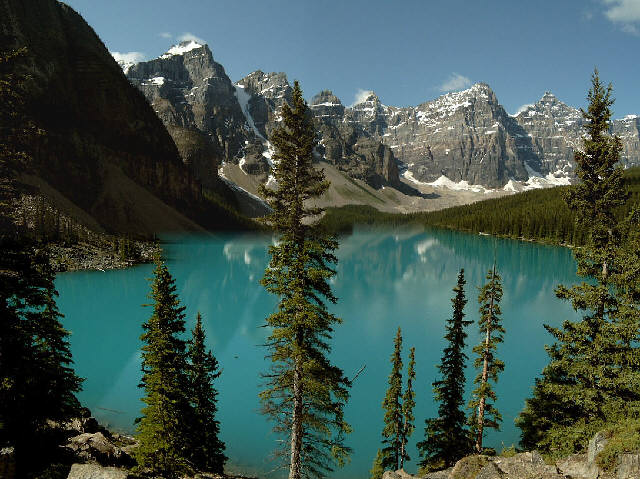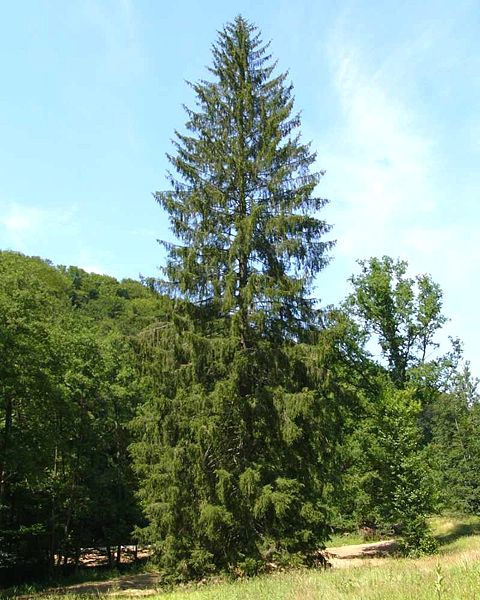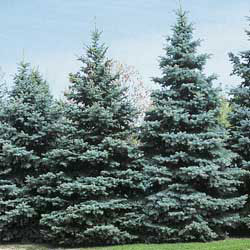
Habitat & Geography
Picea
pungens is most
commonly found growing along streamsides in mountain valleys, where
moisture levels in the soil are greater than the often low rainfall in
the area would suggest. Large conifer forests in the western U.S. hold
the majority of wild Blue Spruce, although you may see Spruce
populations nearly anywhere in that area.
 The Rocky Mountains of
Colorado are a great place to find a Blue Spruce. Most often found wild in Utah
and Colorado, occasionally making appearances in New Mexico and
Wyoming. Native grown Spruce
tend to live in higher altitudes from 1,750-3,000 m but non-native grown
Spruce can inhabit any range of landscape due to their ability to adapt.
P. pungens is a
species of spruce native to western North America although it is
cultivated in all 50 states and commonly cultivated in Europe. The Blue
Spruce, despite its limited natural range, is able to grow under a wide
variety of conditions, and it is considered highly desirable as a landscape
plant due to the unusual blue-gray color of its foliage.
The Rocky Mountains of
Colorado are a great place to find a Blue Spruce. Most often found wild in Utah
and Colorado, occasionally making appearances in New Mexico and
Wyoming. Native grown Spruce
tend to live in higher altitudes from 1,750-3,000 m but non-native grown
Spruce can inhabit any range of landscape due to their ability to adapt.
P. pungens is a
species of spruce native to western North America although it is
cultivated in all 50 states and commonly cultivated in Europe. The Blue
Spruce, despite its limited natural range, is able to grow under a wide
variety of conditions, and it is considered highly desirable as a landscape
plant due to the unusual blue-gray color of its foliage.
Conifer forests
cover large areas but have few plant and animal species. Other conifers,
and even other Spruces, such as the
 Norway Spruce (Picea
abies) dwell in these areas. Animals mentioned before,
such as the spruce grouse and many insect and worm species reside among
the trees and in the soil. Other birds may nest in these trees and
contribute to the biome and ecosystem.
Norway Spruce (Picea
abies) dwell in these areas. Animals mentioned before,
such as the spruce grouse and many insect and worm species reside among
the trees and in the soil. Other birds may nest in these trees and
contribute to the biome and ecosystem.

